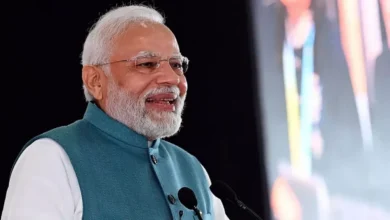Government has set Rs.47,000 Crore Target for Disinvestment and Asset Monetisation

| ➡️ Get instant news updates on Whatsapp. Click here to join our Whatsapp Group. |
In the Union Budget 2025, presented by Finance Minister Nirmala Sitharaman on February 1, the government has set a target of ₹47,000 crore for miscellaneous capital receipts, which includes funds from disinvestment and asset monetisation. However, unlike previous years, the Budget did not specify a separate annual target for disinvestment. Instead, the government has combined disinvestment and asset monetisation under a broader category of capital receipts.
This change reflects a shift in the government’s approach towards privatisation. Rather than aggressively pursuing disinvestment as a major source of revenue, the focus has now moved towards value creation in public sector enterprises. This means improving the performance of these companies through measures like increased capital expenditure, higher dividends, and strategic market dilution, rather than just selling them off.
Disinvestment Efforts in FY25
In the financial year 2024-25 (FY25), the Department of Investment and Public Asset Management (DIPAM) took several steps to raise funds through disinvestment. Some of the key actions included:
- Launching Initial Public Offerings (IPOs) for companies like MSTC Limited.
- Using the Offer for Sale (OFS) route to sell small stakes in major public sector enterprises such as HAL, Coal India, RVNL, SJVN Limited, and HUDCO. These sales collectively raised ₹13,728 crore.
Despite these efforts, the government has faced challenges in completing larger strategic sales. For example, the privatisation of IDBI Bank, which has been in the works for some time, has seen delays. If successful, the sale of a 60.7% stake in IDBI Bank—with 30.48% coming from the government and the rest from its promoter, LIC—could generate around ₹28,000 crore. However, no major privatisation deals have been finalised since the sale of Air India to the Tata Group in October 2021.
Shift Towards Value Creation
In July 2024, after presenting the full Budget for FY25, the then DIPAM Secretary, Tuhin Kanta Pandey, explained the government’s new focus on value creation. This approach aims to strengthen public sector enterprises by:
- Increasing capital expenditure to improve infrastructure and operations.
- Encouraging higher dividend payouts to the government.
- Gradually diluting government stakes in the market to raise funds without losing control.
- Pursuing privatisation only where it makes strategic sense.
This shift indicates that the government is prioritising long-term growth and stability over short-term gains from asset sales. By improving the performance of public sector companies, the government hopes to generate sustainable revenue while maintaining its presence in key sectors.
What This Means for the Economy
The decision to bundle disinvestment and asset monetisation under a single target and focus on value creation shows a more balanced approach to managing public assets. While privatisation remains an option, the emphasis is now on making existing public sector enterprises more efficient and profitable. This could lead to better returns for the government in the long run and ensure that these companies continue to play a significant role in the economy.
However, the delays in strategic sales, such as the IDBI Bank privatisation, highlight the challenges the government faces in executing its plans. Moving forward, the success of this new approach will depend on how effectively the government can implement its value creation strategy and address the hurdles in completing major disinvestment deals.
Overall, the Union Budget 2025 signals a more cautious and strategic approach to managing public assets, with a focus on sustainability and long-term growth.
